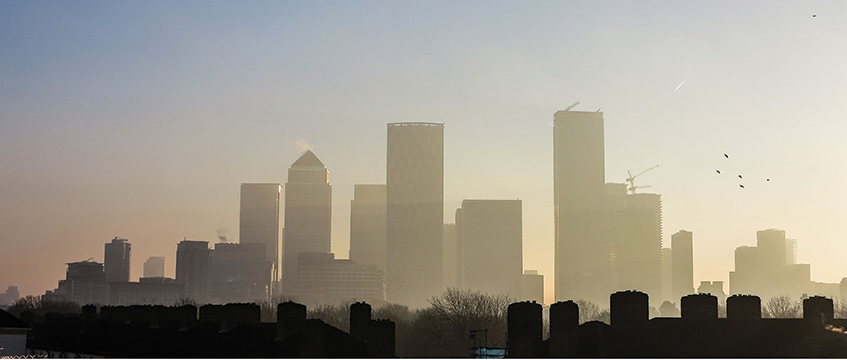London’s office hubs are being reinvented
COMMENT The decade from 2010 saw the focus of attention on London office locations shift across the northern belt from Paddington, Euston, King’s Cross and Old Street to the northern City fringe. Now, look for the focus to pivot to the South Bank, creating the next hot 2020s workplace.
The traditional South Bank is being stretched, from Battersea Power Station and Nine Elms in the west to Canada Water in the east. We see the new south London business districts powering ahead, driven by a post-Covid desire from people to work near water, green space and within walking distance of home.
London’s riverside south London boroughs of Wandsworth, Lambeth and Southwark are perfect for this – hyper-connected through new transport links to a huge talent pool, supported by open space and renowned for a cultural offer of bars, restaurants and theatres.
COMMENT The decade from 2010 saw the focus of attention on London office locations shift across the northern belt from Paddington, Euston, King’s Cross and Old Street to the northern City fringe. Now, look for the focus to pivot to the South Bank, creating the next hot 2020s workplace.
The traditional South Bank is being stretched, from Battersea Power Station and Nine Elms in the west to Canada Water in the east. We see the new south London business districts powering ahead, driven by a post-Covid desire from people to work near water, green space and within walking distance of home.
London’s riverside south London boroughs of Wandsworth, Lambeth and Southwark are perfect for this – hyper-connected through new transport links to a huge talent pool, supported by open space and renowned for a cultural offer of bars, restaurants and theatres.
Property developers and investors have spotted that for employers there is huge potential to tap into the commuter hinterlands of south London, which are now far better connected to central London by the Overground rail network.
Rise of the south
This week, Knight Frank hosted its annual London breakfast for more than 400 guests at Portman Square’s new Nobu Hotel, and the message will be that the capital is reinventing itself by creating new commercial cores in locations that used to be considered fringe.
At the same time, with Brexit done and the pandemic becoming endemic, a wall of international capital is looking to pour into London, and we are forecasting a 17% rise in office investment from overseas in 2022 – and £60.3bn to flow into London over the next five years.
Investors are also attracted by the prospect of investing in green office developments created with team collaboration in mind – whether repurposing existing stock or creating new districts that have the flexibility to start with a clean sheet of paper.
At Canada Water, British Land is building a “net-zero neighbourhood” which will be home to 20,000 workers. Battersea Power Station, which opens to the public this year, will house the London offices of Apple and is benefiting from last September’s opening of its own Northern Line extension station. And at Elephant & Castle, best known for its run-down pink shopping centre – now demolished – there are plans by Delancey to rebuild it and from Lendlease to add commercial offices as part of its Elephant Park build-to-rent neighbourhood.
And don’t believe new office locations can’t become established quickly: the rise of south London follows the creation of new office districts at King’s Cross, Stratford and White City over the past 10 years. This is also the year that the long-awaited opening of the central section of the Elizabeth Line is scheduled, connecting Heathrow and the commuter belts of west and east London.
Speed of recovery
The big surprise of the pandemic is the speed of recovery of the market. Take-up of office space across London has increased over five successive quarters from its nadir in July to September 2020, when the whole future of the office was under threat and the UK was yo-yo-ing in and out of lockdowns.
The focus has been on the most sustainable prime, grade-A developments, with our research showing that office buildings with an “excellent” sustainability rating achieve a 13% higher rent than competitors, and far more than older grade-B properties with poor green ratings which will soon become obsolete.
The other shift we are seeing is in the type of companies occupying offices in London. As well as continued demand from finance, professional and technology companies, we are seeing the impact of growing tech-related business, including fintech and social media, as well as increasing activity from healthcare, life sciences and innovation-focused companies.
Covid-19 has reinforced the importance of these sectors to society and triggered ambitious growth plans requiring new offices based around collaborative working.
And that type of working is at the heart of London’s continued success as an office location, and why even with plans for employees to work a minimum of three days a week in the office, Citigroup last week announced a three-year overhaul of its Canary Wharf skyscraper (pictured) costing £100m.
“It will sort us out for the next 25 years,” said Citigroup’s Europe, Middle East and Africa head, David Livingstone.
And that’s why – even after the pandemic – new office districts are being created across the capital, with a new south London riverside city at the front of the queue in the post-pandemic cycle.
Philip Hobley is head of London offices at Knight Frank
Image © David Taylor/Shutterstock











